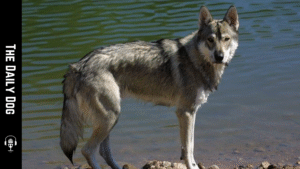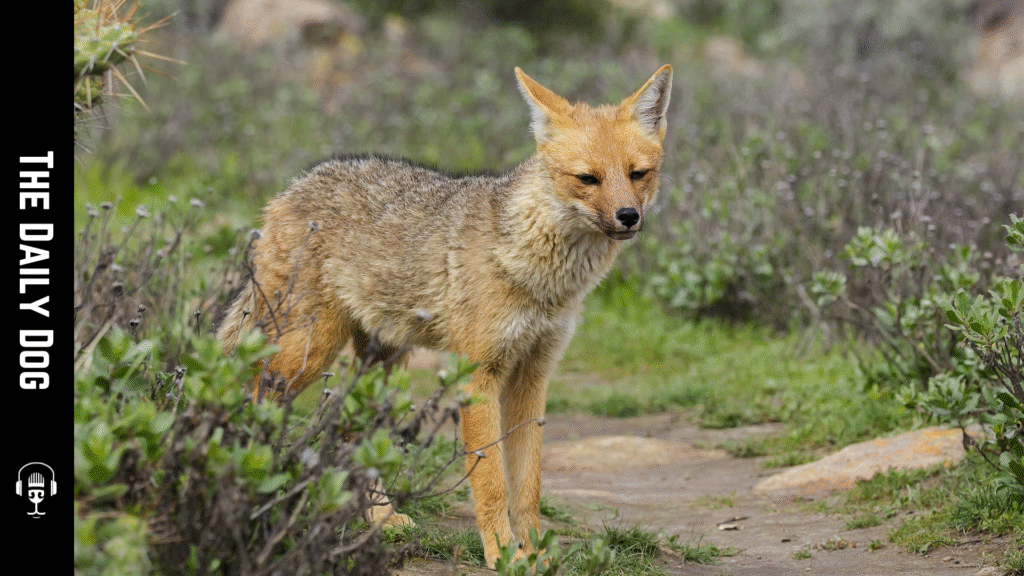The Culpeo, a captivating and intelligent canid native to South America, has garnered increasing interest among dog enthusiasts and wildlife lovers alike. Known for its adaptability, agility, and striking appearance, the Culpeo is a fascinating subject of study and admiration. This unique breed, often mistaken for domesticated dogs, is actually a wild canid with a rich evolutionary history and remarkable characteristics that set it apart from other North and South American canids.
In this blog post, we will explore the origins, physical features, behavior, habitat, and conservation status of the Culpeo. Whether you’re a wildlife enthusiast, a potential pet owner interested in wild canids, or simply curious about this remarkable species, read on to learn more about the Culpeo and its significance in South American ecosystems.
Origins and Taxonomy
The Culpeo (Lycalopex culpaeus) belongs to the genus Lycalopex, a group commonly referred to as South American foxes. Despite its common name, the Culpeo is not a true fox but is closely related to other South American canids such as the Darwin’s fox and the Andean fox. Its scientific classification places it in the family Canidae, which includes wolves, domestic dogs, and other canids.
The Culpeo’s evolutionary history dates back thousands of years, with fossil evidence indicating its presence in South America for at least several millennia. It evolved from a common ancestor shared with other South American canids, adapting over time to a variety of habitats across the continent.
Physical Characteristics
One of the most striking features of the Culpeo is its impressive size and appearance. Adult Culpeos typically measure between 45 to 70 centimeters (17.7 to 27.6 inches) at the shoulder, with a body length ranging from 60 to 85 centimeters (23.6 to 33.5 inches). They usually weigh between 4.5 to 8 kilograms (10 to 18 pounds), making them one of the larger South American foxes.
Their fur is dense and soft, providing insulation against varying climates. The coloration varies but generally includes shades of reddish-brown on the back and sides, with lighter, often whitish, underparts. The face features a pointed snout, erect ears, and keen, expressive eyes that are well-adapted for hunting and navigating their environment.
The tail of the Culpeo is bushy and typically has a darker tip, adding to its distinctive silhouette. Their paws are padded and equipped with sharp claws, which aid in climbing and digging.
Behavior and Diet
Culpeos are primarily solitary animals, though they may occasionally be seen in pairs or small family groups, especially during the breeding season. They are highly adaptable and exhibit opportunistic feeding behaviors, allowing them to thrive across diverse habitats.
Their diet is omnivorous, consisting of small mammals, birds, insects, fruits, and vegetables. They are skilled hunters, capable of catching rodents and small birds, but they also scavenge and forage for plant matter. This dietary flexibility is a key factor in their survival across various environments, from forests and grasslands to mountainous regions.
Culpeos are mostly nocturnal or crepuscular, active during the twilight hours of dawn and dusk. Their keen senses of smell and hearing help them locate prey and avoid predators. They are also excellent climbers, often perching in trees or navigating rocky terrains with agility.
Habitat and Range
The Culpeo’s range extends across the Andes mountain range and surrounding regions, from southern Colombia and Venezuela down through Ecuador, Peru, Bolivia, Chile, and Argentina. They inhabit a variety of ecosystems, including temperate forests, scrublands, grasslands, and mountainous terrains up to elevations of 4,000 meters (13,000 feet).
Their adaptability to different habitats has allowed them to flourish in both remote wilderness areas and human-altered landscapes. In rural regions, they may come into contact with livestock, occasionally causing conflicts with farmers. However, their cautious and elusive nature generally keeps them at a safe distance from humans.
Reproduction and Lifespan
Breeding occurs once a year, with a gestation period of approximately 50 days. Female Culpeos typically give birth to litters of 2 to 6 pups. The young are born blind and helpless, relying on their mother for warmth and nourishment during the initial weeks of life.
Juveniles start exploring their surroundings at around 3-4 weeks old and become more independent as they grow older. They reach sexual maturity at about one year of age. In the wild, Culpeos have a lifespan of around 6 to 8 years, though they can live longer in captivity or protected environments.
Conservation Status and Threats
The Culpeo is currently classified as a species of Least Concern by the International Union for Conservation of Nature (IUCN). Its widespread distribution and adaptability contribute to its relatively stable population. However, local threats do exist and include habitat destruction, hunting, and conflicts with humans.
Deforestation for agriculture and urban development reduces available habitat, especially in regions where the species is hunted or persecuted. Additionally, road accidents and poisoning pose risks to their populations. In some areas, Culpeos are targeted for their fur or killed due to perceived threats to livestock.
Conservation efforts focus on habitat preservation, promoting coexistence with local communities, and conducting research to monitor population trends. Education campaigns also play a crucial role in reducing human-wildlife conflicts and fostering appreciation for this wild canid.
The Role of the Culpeo in Ecosystems
As a top predator and scavenger, the Culpeo plays a vital role in maintaining ecological balance. By controlling populations of small mammals and insects, they help regulate prey populations and prevent overgrazing. Their scavenging behavior aids in nutrient recycling and reduces the spread of disease.
Furthermore, Culpeos are an important part of the food chain, serving as prey for larger predators such as pumas and Andean condors in certain regions. Their presence indicates healthy ecosystems and biodiversity.
Human-Culpeo Interactions
Historically, Culpeos have had limited interactions with humans due to their elusive nature. However, as human populations expand and habitats overlap, conflicts may arise. Farmers sometimes see them as pests or threats to livestock, leading to retaliatory killings.
Conversely, some local communities recognize the importance of conserving Culpeos and may engage in wildlife-friendly practices. Ecotourism initiatives centered around wildlife observation have also contributed to fostering respect and understanding for this species.
How to Support Culpeo Conservation
Supporting Culpeo conservation involves multiple strategies:
Habitat Protection: Supporting organizations that work to preserve natural habitats and promote sustainable land-use practices.
Education and Awareness: Learning about the ecological importance of the Culpeo and sharing this knowledge to reduce misconceptions.
Research and Monitoring: Encouraging scientific studies to better understand their behavior, population dynamics, and threats.
Community Engagement: Collaborating with local communities to develop coexistence strategies that benefit both humans and wildlife.
Responsible Tourism: Participating in eco-friendly tourism activities that promote wildlife appreciation without disturbing natural behaviors.
The Culpeo stands out as a remarkable example of South America’s rich and diverse wildlife. Its adaptability, intelligence, and ecological significance make it a vital component of the continent’s ecosystems. While currently not under significant threat, ongoing conservation efforts are essential to ensure that this wild canid continues to thrive amidst changing landscapes and human pressures.
By understanding and appreciating the unique qualities of the Culpeo, we can foster a greater sense of responsibility toward preserving South America’s natural heritage. Whether as a subject of scientific interest or a symbol of wildness and resilience, the Culpeo embodies the untamed spirit of the South American wilderness.
Remember: Protecting species like the Culpeo contributes to the health of ecosystems worldwide. Supporting conservation initiatives and promoting sustainable coexistence are key steps toward ensuring that future generations can marvel at the beauty and complexity of South America’s wild canids.
We offer a FREE Strategy Call.
Click on the graphic to learn more
Read More


Tamaskan Dog Breed: Temperament, Care, and What Owners Should Know







